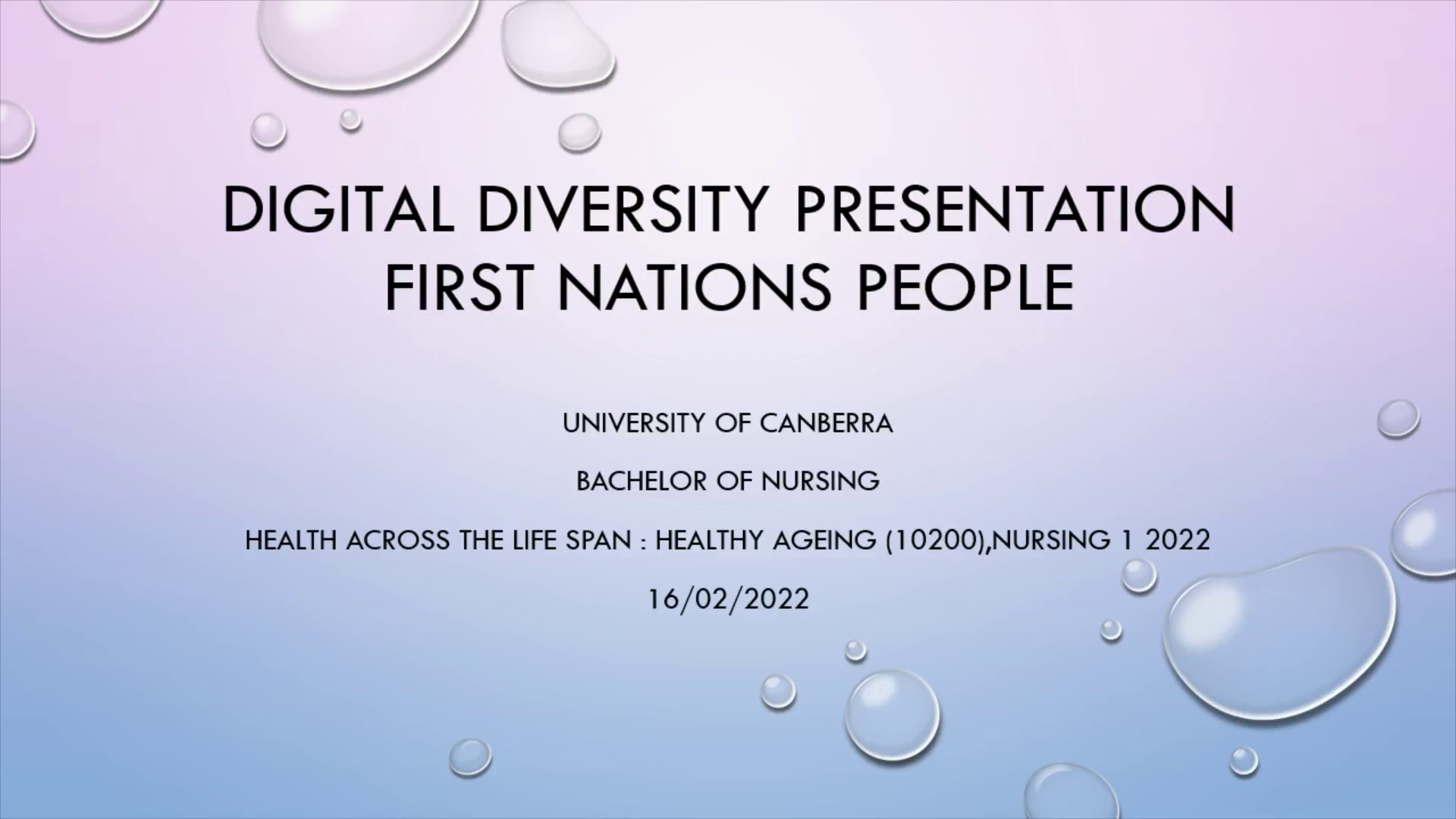
Page 1 (0s)
Digital Diversity presentation First Nations people.
Page 2 (5s)
First Nations People. The First Nations people are recognized as the Native Americans. The Natives and Aboriginal communities have been subjected to a variety of social discrepancies on basis of their ethnicity and overall social background. The diversity of the population has in essence has been significant in the health outcomes of the community..
Page 3 (49s)
Health challenges. The First Nations People have been subjected to discrimination and prejudice in the health sector. The prejudice has been associated with the culture and spiritual beliefs and preferences of the communities. The long term consequences have reflected on the health of the communities as they age..
Page 4 (1m 37s)
Cont’d. The cultural diversity of the First Nations People presents different ideologies and perspectives in terms of healthcare. In this respect, the aspect of the spiritual beliefs of the First Nations People may project a form of hindrance to the approaches of modern medicine. The perspectives of modern medicine are not fully welcomed in some respect. However, the primary consequence has been associated with the health outcomes of the people in old age ( Habjan et al., 2012)..
Page 5 (1m 54s)
Cont’d. Modern medicine has been a feature that is slowly being accepted by the First Nations People. However, the accessibility to the different medical facilities and medical services presents a limitation to the possibility of positive health outcomes for the ageing First Nations People (Walker, 2020) In the long term, outside the scope of the people’s culture and spiritual beliefs, the overall social and physiological health of the people becomes negatively affected..
Page 6 (2m 37s)
Importance of the ageing person’s role. The role of the ageing persons is associated with their ability to take note of the fact that they need health interventions. In essence, when the ageing population is strongly rooted in the culture and spiritual beliefs, it becomes difficult to impose medical intervention. Practically, the ageing person is relevant in terms of providing the grounds upon which the health outcomes may be determined. In their absence, it would be difficult to ascertain the required interventions to improve the health outcomes..
Page 7 (3m 25s)
Cont’d. The ageing person is important in determining their life and health context. Primarily, despite the challenges and differences in regard to the cultural and spiritual preferences, it is imperative for the ageing person to provide direction and perspective about their health and life. Therefore, determining the personal life and health context sheds insight on the path of health chosen by the ageing person..
Page 8 (3m 52s)
Services and initiatives. Based on the diversity presented in the cultural and spiritual beliefs of the First Nations People, different initiatives have been put up ass part of drawing a bridge between the community and the healthcare sector. In this directive, the most appreciative initiative has been the development of cultural competency in the healthcare sector ( Malatzky et al., 2018). In essence, medical practitioners have been educated on the cultural and spiritual diversity of the First Nations People while the community has been educated on the relevance of modern medicine..
Page 9 (4m 27s)
Nurses advocacy. In respect to cultural competency, nurses have been able to understand the diversity of the patients they attend to in different capacities. Following the knowledge about the cultures and beliefs of the people, the nurses have made it necessary to ensure that the First Nations People patients and consumers are aware of their choices. Therefore, the patients are made aware of the available opportunities associated with their health and life outcomes..
Page 10 (4m 58s)
references. Habjan , S., Prince, H., & Kelley, M. (2012). Caregiving for Elders in First Nations Communities: Social System Perspective on Barriers and Challenges. Canadian Journal on Aging / La Revue Canadienne Du Vieillissement , 31(2), 209-222. https://doi.org/10.1017/S071498081200013X Malatzky , C., Nixon, R., Mitchell, O. & Lisa, B. (2018) Prioritising the cultural inclusivity of a rural mainstream health service for First Nation Australians: an analysis of discourse and power , Health Sociology Review , 27:3, 248-262, https://doi.org/10.1080/14461242.2018.1474720 Walker, J. (2020). Aging and Frailty in First Nations Communities. Canadian Journal on Aging / La Revue Canadienne Du Vieillissement , 39(2), 133-144. https://doi.org/10.1017/S0714980817000319.